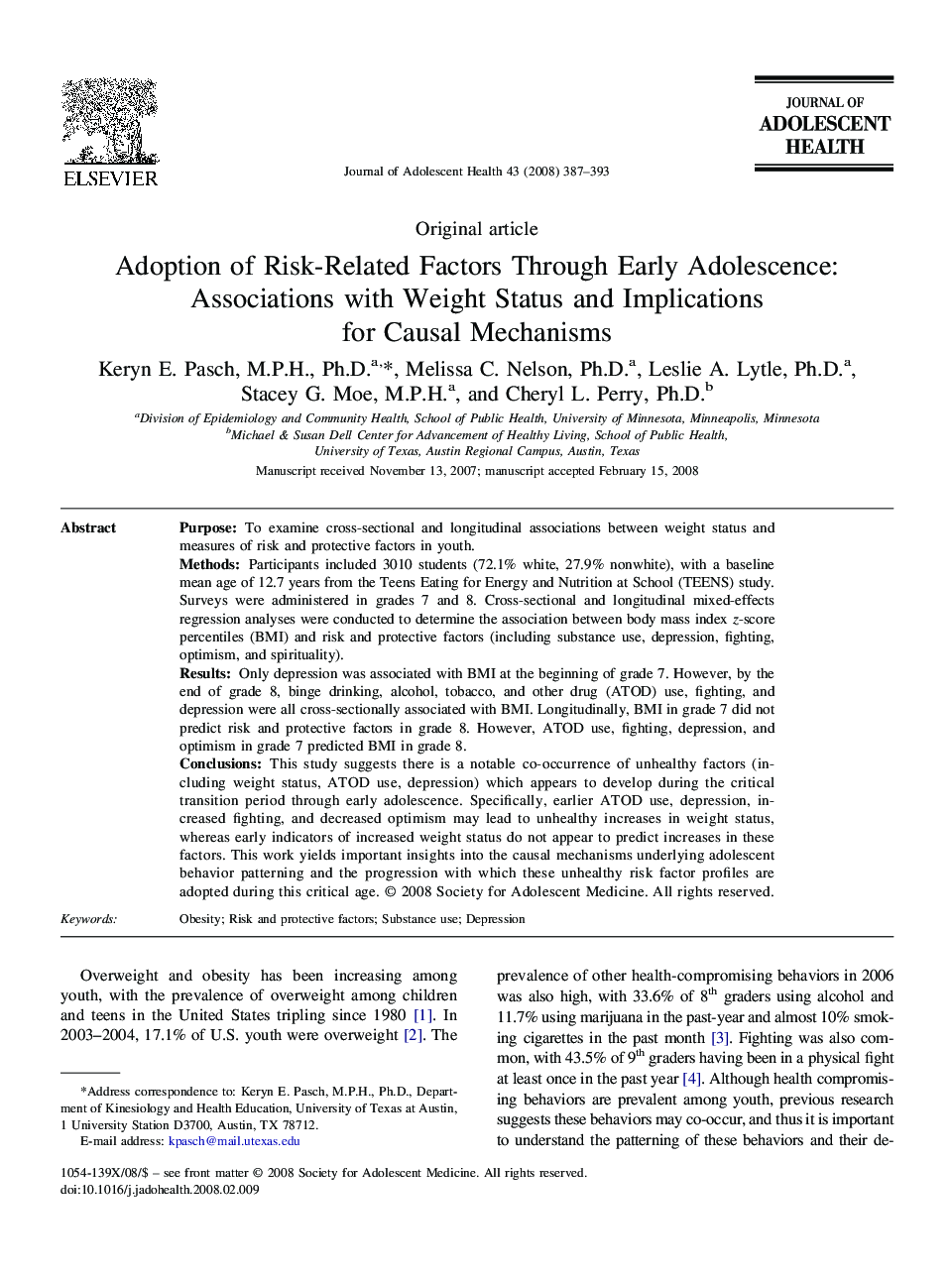| Article ID | Journal | Published Year | Pages | File Type |
|---|---|---|---|---|
| 1079871 | Journal of Adolescent Health | 2008 | 7 Pages |
PurposeTo examine cross-sectional and longitudinal associations between weight status and measures of risk and protective factors in youth.MethodsParticipants included 3010 students (72.1% white, 27.9% nonwhite), with a baseline mean age of 12.7 years from the Teens Eating for Energy and Nutrition at School (TEENS) study. Surveys were administered in grades 7 and 8. Cross-sectional and longitudinal mixed-effects regression analyses were conducted to determine the association between body mass index z-score percentiles (BMI) and risk and protective factors (including substance use, depression, fighting, optimism, and spirituality).ResultsOnly depression was associated with BMI at the beginning of grade 7. However, by the end of grade 8, binge drinking, alcohol, tobacco, and other drug (ATOD) use, fighting, and depression were all cross-sectionally associated with BMI. Longitudinally, BMI in grade 7 did not predict risk and protective factors in grade 8. However, ATOD use, fighting, depression, and optimism in grade 7 predicted BMI in grade 8.ConclusionsThis study suggests there is a notable co-occurrence of unhealthy factors (including weight status, ATOD use, depression) which appears to develop during the critical transition period through early adolescence. Specifically, earlier ATOD use, depression, increased fighting, and decreased optimism may lead to unhealthy increases in weight status, whereas early indicators of increased weight status do not appear to predict increases in these factors. This work yields important insights into the causal mechanisms underlying adolescent behavior patterning and the progression with which these unhealthy risk factor profiles are adopted during this critical age.
